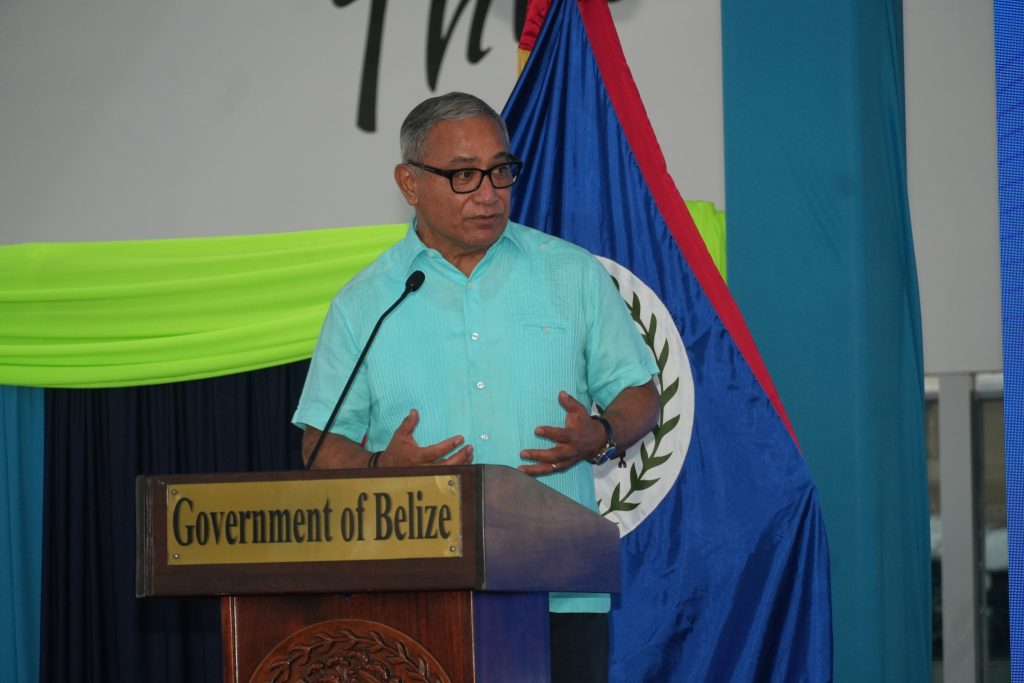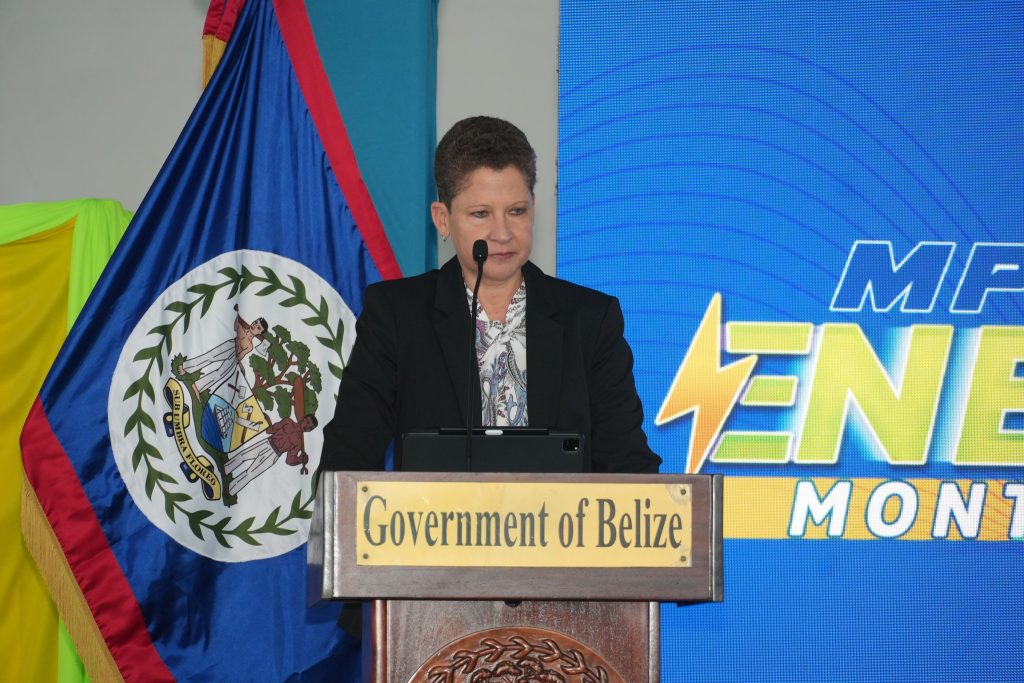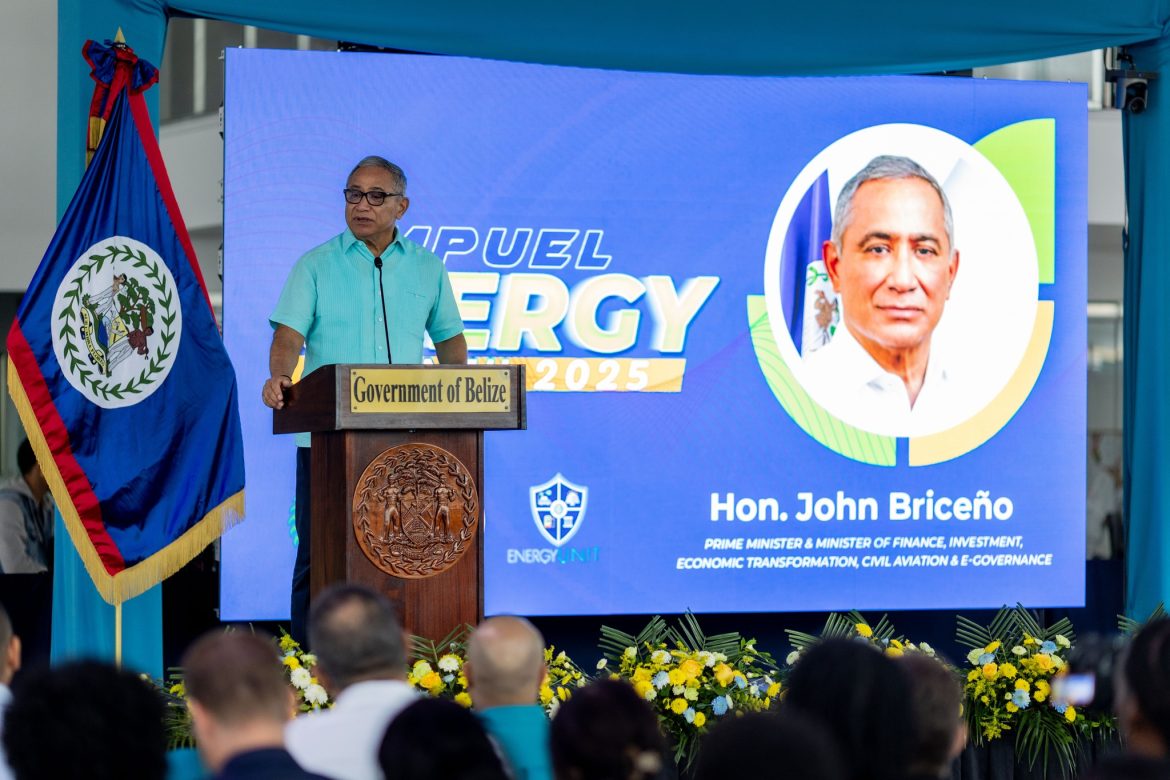The Caribbean Motors Showroom in Belize City doesn’t usually feel like a policy forum. But for one day in November 2025, it turned into the beating heart of Belize’s energy conversation, as the Ministry of Public Utilities, Energy & Logistics (MPUEL) hosted the MPUEL Energy Fair 2025.
Leaders, private-sector partners, and students from high schools across the country gathered under one roof to talk about something we all rely on but rarely think about: energy. The fair’s theme — “Invest, Innovate, Sustain: Leading the Charge in Renewable Energy Frontiers” — echoed through the opening ceremony, the panel discussions, and the buzzing exhibition floor.
At its core, the fair was about making Belize’s energy transition visible and tangible: cleaner, smarter and more sustainable solutions, not just as slogans, but as projects, policies, and technologies already in motion.
A Fair About More Than Booths and Banners
From the moment the doors opened, the atmosphere felt different. High school students moved from booth to booth, asking questions about solar panels, hydroelectric systems, electric vehicles, and energy-efficient devices. Companies and institutions showcased technologies that, a few years ago, might have felt distant or “for other countries.” Now, they’re part of Belize’s own roadmap.
Panel discussions dug into the big questions:
- How do we keep electricity affordable while investing in new infrastructure?
- How can Belize reduce its dependence on imported power and fossil fuels?
- What skills will the next generation need to lead this transition?
The opening ceremony framed these conversations at the national level, setting out a vision: energy policy is no longer just a technical issue — it is central to economic competitiveness, social inclusion, and climate resilience.

A Defining Moment: Bringing Hydro Power Back Home
One of the most powerful moments of the day came with reflections from the Prime Minister, Hon. John Briceño. He highlighted Belize’s ongoing move toward cleaner energy and the idea of “energizing Belize” not only in a literal sense, but as a driver of growth, opportunity, and sovereignty.
A key highlight was the Government of Belize’s recent deal to acquire the hydroelectric power plants previously owned by BECOL (Belize Electric Company Limited), a subsidiary of Fortis Inc., along with Fortis’ 33.3% shareholding in Belize Electricity Limited (BEL).
The acquisition includes three major hydropower plants on the Macal River — Mollejon (25 MW), Chalillo (7 MW), and Vaca (19 MW) — which together generate more than one-third of Belize’s annual electricity supply.
With an overall price tag of about BZD 256 million, the transaction is being framed not just as a patriotic move, but as a strategic investment. The government plans to finance the deal mainly through domestic mechanisms — treasury bills, notes, and returns from the hydro facilities themselves — with the expectation that profits and dividends will now remain in Belize rather than being repatriated abroad.
For the Energy Fair audience, especially the students in the room, this wasn’t just abstract finance talk. It was a clear message:
- Belize is reclaiming control over key pieces of its energy infrastructure.
- Future gains from these assets — financial and strategic — will be shaped by Belizean decisions.
This context gave the rest of the fair a sense of momentum. It felt less like “someday we will transition” and more like “we’re in the middle of it right now.”
Voices of Leadership: Policy, People, and Purpose
Other notable speakers reinforced that message.
- Hon. Michel Chebat, Minister of Public Utilities, Energy & Logistics, underscored the importance of a coherent policy and regulatory environment that rewards innovation while protecting consumers. He emphasized that energy policy has to balance reliability, affordability, and sustainability — not one at the expense of the others.
- Dr. Leroy Almendarez, CEO, connected the dots between energy and broader national development. Energy reliability affects investment decisions, job creation, and the competitiveness of Belizean businesses. When power is stable, clean, and reasonably priced, the economy has room to grow in a healthier way.
Together, their interventions framed Belize’s energy transition as a whole-of-society project: government, private sector, development partners, academia, and communities all have a role to play.

Kay Menzies and the Power of Imagination
One of the standout contributions came from Kay Menzies, President & CEO of Hydro Belize Limited. In her speech, she invited the audience to imagine Belize ten years from now: a country where the sun, rivers, wind, and agricultural by-products are not just “nice extras,” but the main engine powering homes, businesses, and industries.
Drawing on Belize’s current energy mix, she reminded the audience that:
- Just over half of local generation already comes from renewables such as hydropower, biomass, and solar (including microgrids in remote areas).
- Significant utility-scale solar (around 135 MW), with storage, is in the pipeline.
- Biomass from sugar and other agro-industries offers circular-economy opportunities, where “waste becomes wattage.”
- Wind resources in coastal and offshore areas, and certain higher-elevation zones, are promising enough to merit serious exploration.
But she also stressed that the biggest challenge isn’t purely technical — it’s cultural. Belize needs to shift from thinking of itself as a passive energy consumer to seeing itself as an active energy producer and regional leader. That means:
- Investing in grid upgrades to North American-level reliability standards.
- Building human capacity — engineers, technicians, policymakers, entrepreneurs.
- Creating spaces where students and researchers can turn ideas into home-grown solutions.
Importantly, Menzies highlighted the role of women and young people in this transition. From women solar engineers working in remote communities to the girls in the audience considering STEM careers, the message was clear: the energy sector is not a closed club. It is wide open to those ready to innovate and lead.
Energy: The Invisible Thread in Everyday Life
Across the fair, one theme kept resurfacing: energy is the invisible thread running through Belizean life.
- The lights in classrooms and hospitals.
- The refrigeration that keeps food and medicine safe.
- The connectivity that powers online learning, e-government, and digital business.
- The pumps, factories, and machines that keep our economy moving.
When electricity is there, we don’t think about it. When it’s not, everything stops.
Exhibition booths helped make that visible. Students could see how solar microgrids can keep rural communities powered when the main grid can’t reach. Demonstrations of energy-efficient appliances and lighting showed how small changes at home and at school can reduce demand and save money. Discussions around electric vehicles hinted at a future where Belize’s transport system is more aligned with its climate goals.
All of this made “energy” feel less like a line item on a bill and more like a living system that touches every part of society.
Seeing the “Behind the Scenes” as Part of MCA-Belize
For those of us involved with MCA-Belize, the fair also felt personal.
Working on a program that targets both education and energy, you start to see how deeply power systems shape opportunity. Reliable, affordable electricity means:
- Schools can integrate more technology into teaching.
- Households can study and work after dark.
- Businesses can invest with more confidence.
It’s easy, in daily life, to take energy for granted — to assume that when you flip the switch, the light simply comes on. Being at the MPUEL Energy Fair 2025 was a reminder that behind that simple act lies a complex web of policy decisions, long-term investments, hard engineering problems, and everyday human effort.
Personally, it shifted my perspective. Instead of seeing kilowatt-hours as “given,” I now see them as the end result of choices Belize is making right now — about ownership, sustainability, and the kind of future we want for the next generation.
Why This Fair Matters
In the end, the MPUEL Energy Fair 2025 was more than an event. It was a snapshot of a country in motion:
- A government reclaiming key hydro assets and shares to strengthen energy sovereignty and keep profits at home.
- A new national conversation about renewables, storage, and grid resilience.
- A private sector testing new business models in solar, biomass, and efficiency.
- A generation of students beginning to see themselves not just as energy users, but as future energy professionals.
Belize’s energy transition won’t be finished in a year, or even in a decade. But events like this fair make something important happen: they turn abstract policy into a shared story that people can see, question, and be part of.
If we keep investing, keep innovating, and — just as crucially — keep sustaining our efforts, Belize can move from “catching up” to truly leading in renewable energy in our region. And when that happens, we’ll look back at gatherings like the MPUEL Energy Fair 2025 as the places where that future first felt real.

